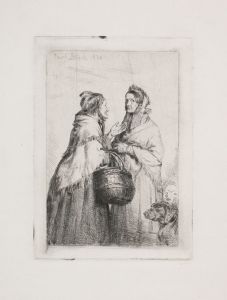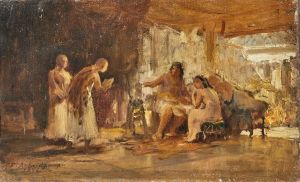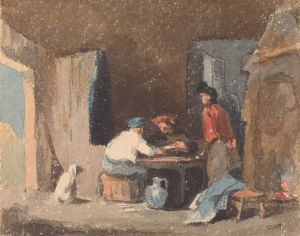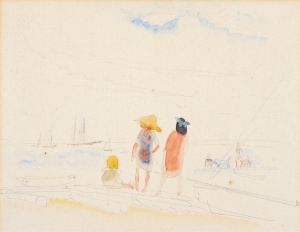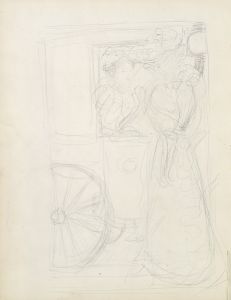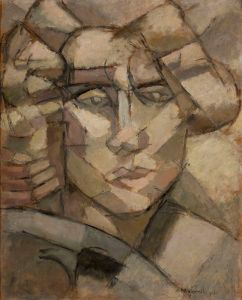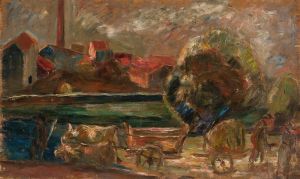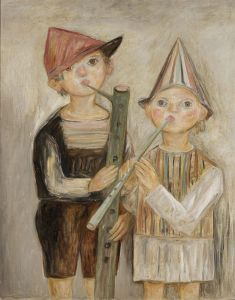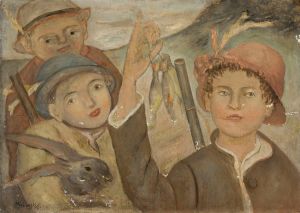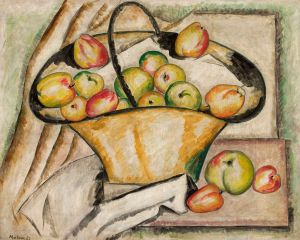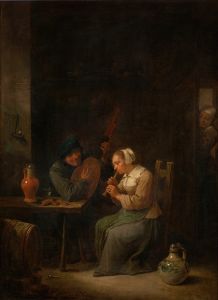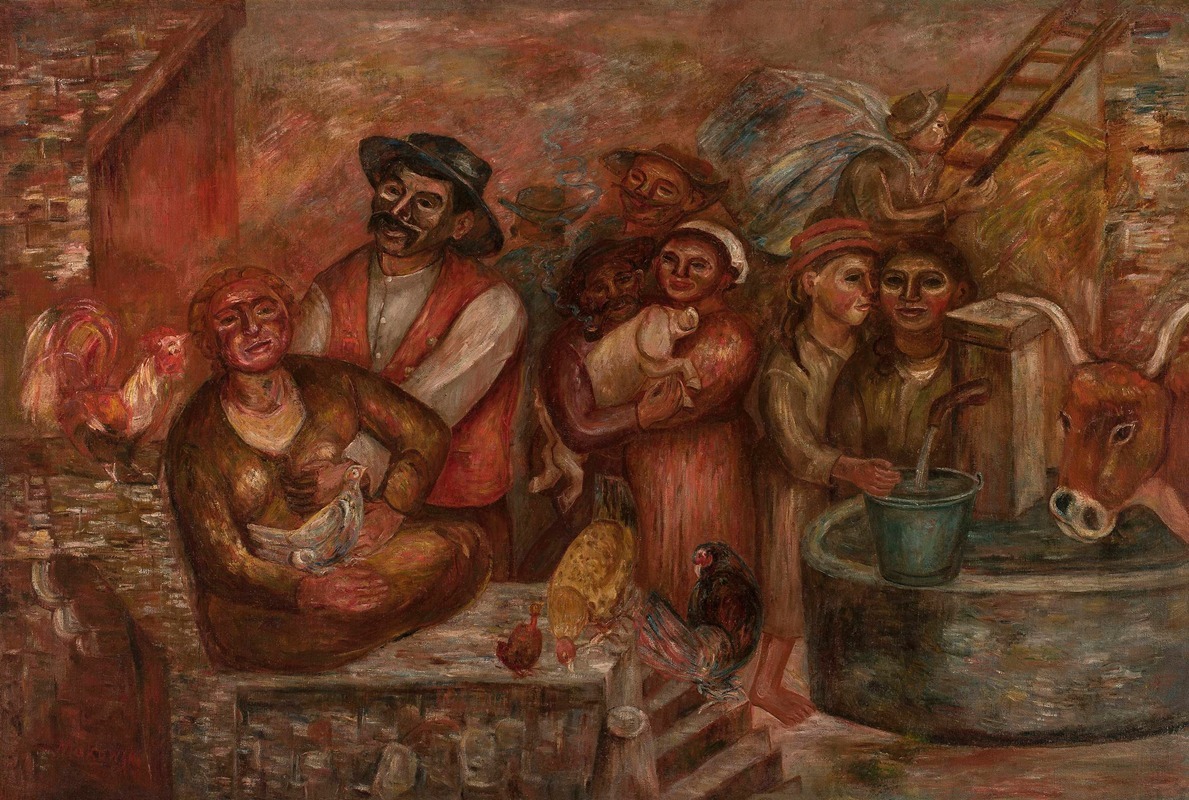
Villagers
A hand-painted replica of Tadeusz Makowski’s masterpiece Villagers, meticulously crafted by professional artists to capture the true essence of the original. Each piece is created with museum-quality canvas and rare mineral pigments, carefully painted by experienced artists with delicate brushstrokes and rich, layered colors to perfectly recreate the texture of the original artwork. Unlike machine-printed reproductions, this hand-painted version brings the painting to life, infused with the artist’s emotions and skill in every stroke. Whether for personal collection or home decoration, it instantly elevates the artistic atmosphere of any space.
"Villagers" is a painting by the Polish artist Tadeusz Makowski, created in 1932. Makowski, born on January 29, 1882, in Oświęcim, Poland, was a prominent painter known for his unique style that combined elements of folk art, cubism, and symbolism. He spent a significant part of his career in France, where he was influenced by various modern art movements.
The painting "Villagers" depicts a group of rural inhabitants, capturing the essence of village life with a sense of simplicity and charm. Makowski's work often reflected his fascination with the innocence and purity of rural life, and "Villagers" is no exception. The figures in the painting are stylized and somewhat abstract, a characteristic feature of Makowski's style, which often blended geometric forms with a whimsical, almost childlike quality.
Makowski's use of color in "Villagers" is notable for its muted, earthy tones, which enhance the rustic atmosphere of the scene. The composition is balanced and harmonious, with the figures arranged in a way that guides the viewer's eye through the painting. The background is minimalistic, focusing attention on the villagers themselves and their interactions.
Throughout his career, Tadeusz Makowski was influenced by various art movements and artists. His early works were influenced by the Symbolist movement, but after moving to Paris in 1908, he became acquainted with cubism and other avant-garde styles. Despite these influences, Makowski developed a distinctive style that remained consistent throughout his career, characterized by its simplicity, geometric forms, and a focus on everyday life.
Makowski's work, including "Villagers," often reflects a sense of nostalgia and a longing for the simplicity of rural life. This theme resonated with many viewers, making his work popular both in Poland and abroad. His ability to capture the essence of his subjects with minimal detail and a unique artistic vision has earned him a lasting place in the history of modern art.
"Villagers" is housed in the National Museum in Warsaw, Poland, where it is part of a larger collection of Makowski's works. The painting is considered an important example of his mature style and is appreciated for its artistic and cultural significance. Makowski's contribution to Polish art and his unique approach to painting continue to be studied and admired by art historians and enthusiasts alike.
Tadeusz Makowski passed away on November 1, 1932, in Paris, but his legacy lives on through his paintings, which continue to be celebrated for their distinctive style and emotional depth. "Villagers" remains a testament to his ability to capture the beauty and simplicity of everyday life through his unique artistic lens.





